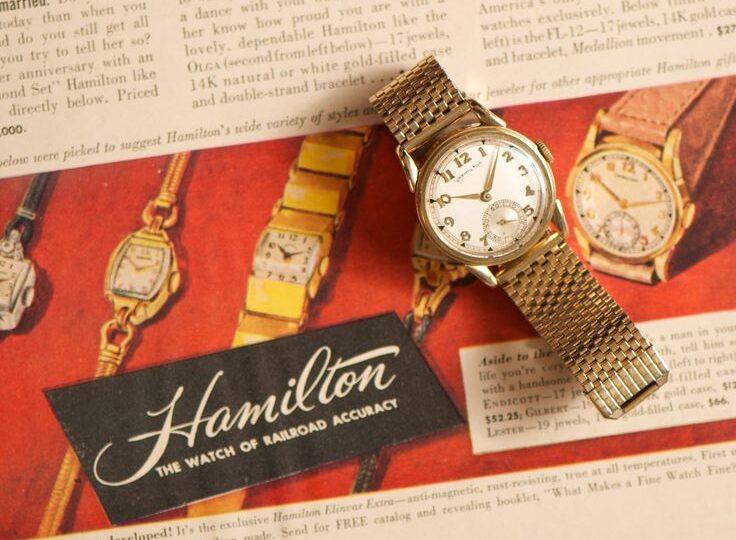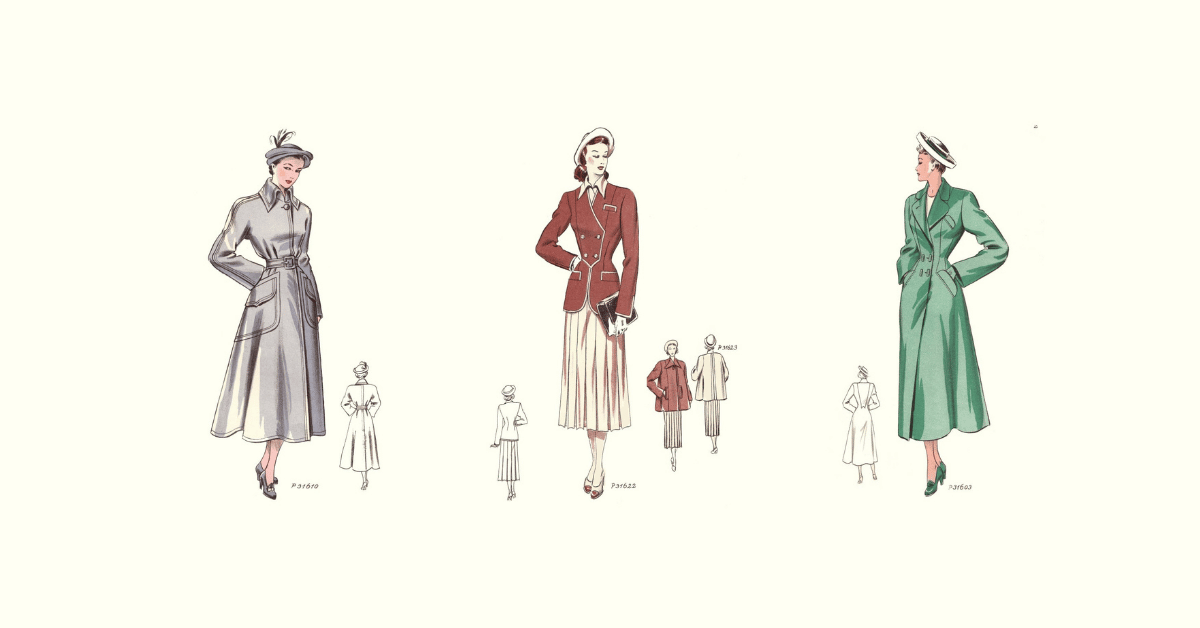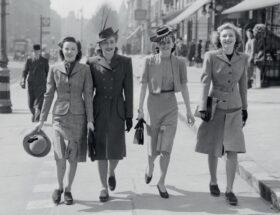In the 1940s, style was spoken through every carefully chosen accessory. Watches were as essential to one's ensemble as the finishing touch of a fine hat or the sparkle of polished shoes.
Celebrities like Humphrey Bogart, Ingrid Bergman, and Frank Sinatra were known for proudly showcasing their exquisite timepieces, fueling the flames of a burgeoning trend that would soon spread like wildfire throughout the cultural milieu.
As Hollywood's glittering stars graced the silver screen and radio waves pulsed with the rhythm of swing and jazz, a craze for horology swept through popular culture. The royal courts, too, seduced by the allure of what was in vogue, succumbed to the irresistible temptation to incorporate the latest fashion trends. King George VI of the United Kingdom favored the understated elegance of a Rolex Oyster Perpetual, while King Farouk I indulged in the luxury of a Patek Philippe Calatrava.
Design elements of watches from the 1940s
The design of watches from the 1940s was deeply influenced by the aesthetic principles of Art Deco. The term "Art Deco" derives from the 1925 Exposition Internationale des Arts Décoratifs et Industriels Modernes held in Paris, where the style featured prominently. It was popularized by the influential French art critic Maurice Rheims in the 1960s, who used it to describe the decorative arts of the 1920s and 1930s.
Art Deco influenced everything from fashion and furniture to graphic design and, of course, watchmaking. In watches, Art Deco elements are often seen in the geometric shapes of watch cases, the stylized numerals on dials, and the intricate detailing of bezels and lugs.
Symmetry was a hallmark of Art Deco design, and watches of the 1940s embraced this principle with gusto. Dials featured vibrant hues like deep blues, rich greens, and fiery reds. Engraved bezels, guilloché dials, and decorative lugs were common, as were rectangular, square, and octagonal case shapes.
The Fascinating History of Wristwatches
When speaking of the history of wristwatches, we have to mention Caroline bonaparte. She was the first person to request the creation of wristwatch.
Caroline Bonaparte was born on March 25, 1782, in Ajaccio, Corsica. Caroline spent much of her youth in Corsica, where her father was a prominent politician, before later residing in Paris and eventually Naples after her marriage to Joachim Murat, King of Naples.
As a member of the Bonaparte family and later as the Queen of Naples, Caroline was surrounded by opulence, grandeur, and the latest trends of her time. The royal courts were hubs of fashion and extravagance, where elaborate balls, receptions, and soirées allowed the nobility to showcase their exquisite attire and accessories.
That said, in 1810, Queen Carolina commissioned Abraham-Louis Breguet, one of the most renowned watchmakers of the time, to create a wristwatch for her.
Queen Caroline Murat's request for a wristwatch in 1810 was quite innovative, as wearing a timepiece on the wrist was uncommon then. Pocket watches were the prevailing timekeeping devices worn by men and women and carried in pockets or attached to chains.
After several months, Abraham-Louis Breguet presented Queen Caroline Murat with a stunning wristwatch (Breguet No. 2639) that exceeded all expectations. Following Abraham-Louis Breguet's footsteps, numerous watchmaking brands emerged after the wristwatch craze.
Patek Philippe created one of the earliest wristwatches in 1868 for Countess Koscowicz. Cartier introduced its first wristwatch, the Santos, in 1904 for Brazilian aviator Alberto Santos-Dumont, and other venerable brands like Jaeger-LeCoultre Vacheron Constantine produced some of the most prestigious and sought-after wristwatches of that era.
By the 1940s, wristwatches had become ubiquitous accessories. During World War II, they were indispensable tools for coordinating troop movements, synchronizing attacks, and timing maneuvers.
The 1940s also saw the emergence of new materials and technologies in watchmaking, such as the use of stainless steel cases and the development of automatic (self-winding) movements. These innovations made wristwatches more durable, reliable, and convenient than ever, further fueling their popularity and widespread adoption.
Ten Iconic Watch Brands of the 1940s
Vacheron Constantine
Vacheron Constantin was founded in 1755 by Jean-Marc Vacheron in Geneva, Switzerland. Prominent figures like Winston Churchill and Franklin D. Roosevelt were often seen sporting Vacheron Constantin watches, and even Hollywood stars like Charlie Chaplin and Grace Kelly couldn't resist the allure of Vacheron Constantin's watches.
Fun fact: In 1812, Vacheron Constantin created one of the most complicated mechanical watches of its time, featuring a perpetual calendar, minute repeater, and moon phase display
Breguet
Breguet, a pioneer in watchmaking, was established in 1775 by Abraham-Louis Breguet in Paris, France. During the 1940s, Breguet's reputation for elegance and exclusivity attracted influential personalities like military leaders and statesmen.
Fun Fact: Legend has it that when Napoleon Bonaparte received his Breguet watch, he was so impressed by its craftsmanship that he referred to it as "the king of watches, and the watch of kings." However, in a humorous twist, when Napoleon's son tried to wind the watch vigorously, he accidentally broke it. This incident led to the creation of a special type of shock protection known as the "pare-chute," designed to prevent damage to the delicate inner workings of the watch.
Patek Philippe
Patek Philippe was founded in 1839 in Geneva, Switzerland, by Antoine Norbert de Patek, François Czapek, and later, Jean Adrien Philippe. In the 1940s, Patek Philippe watches graced the wrists of dignitaries, celebrities, and discerning collectors. Patek Philippe's slogan is "You never actually own a Patek Philippe. You safeguard it for the next generation."
Fun Fact: Patek Philippe's watches have been owned by some of the most iconic figures in history, including Queen Victoria, Albert Einstein, and Pablo Picasso.
Cartier
Founded in Paris in 1847 by Louis-François Cartier, Cartier has captivated generations with iconic designs, from the revolutionary Tank watch to the mesmerizing Panthère motif. Steeped in history and romance, Cartier has adorned the wrists and necks of some of the world's most influential historical figures.
Fun Fact: During World War II, Cartier's Paris boutique was known as a meeting place for the French Resistance. The Nazis, who occupied Paris at the time, had closed down most luxury establishments, but Cartier's doors remained open. Behind the scenes, Cartier secretly provided vital services to the Resistance, such as forging documents and hiding valuables for those fleeing persecution.
Rolex
Rolex came into being in 1905. During the 1940s, Rolex watches graced the wrists of influential figures such as British Prime Minister Winston Churchill and American President Dwight D. Eisenhower.
Fun Fact: In 1960, Rolex achieved a monumental feat when the Trieste, a deep-sea submersible, descended to the deepest point on Earth—the Mariana Trench—carrying a specially designed Rolex Deep Sea Special attached to its hull.
Audemars Piguet
Founded in 1875 in the heart of the Swiss Jura Mountains by Jules Louis Audemars and Edward Auguste Piguet, Audemars Piguet epitomizes the artistry and craftsmanship of haute horlogerie. During the 1940s, Audemars Piguet watches adorned the wrists of discerning collectors, dignitaries, and connoisseurs.
Fun Fact: One of Audemars Piguet's most iconic timepieces, the Royal Oak, was introduced in 1972 and designed by Gerald Genta just one night before its debut at the Baselworld watch fair. Genta reportedly sketched the design on a napkin during dinner, creating a timeless masterpiece that revolutionized the luxury sports watch category.
Omega
Omega has been around since 1848, thanks to the genius of Louis Brandt. Notable figures who wore Omega watches in the 1940s include British RAF pilots, American soldiers, and renowned explorers like Sir Edmund Hillary.
Fun Fact: In 1969, Omega made history by becoming the first watch worn on the moon, as Buzz Aldrin wore an Omega Speedmaster Professional during NASA's Apollo 11 mission.
Jaeger-LeCoultre
Jaeger-LeCoultre's story starts way back in 1833. In the 1940s, the brand was synonymous with sophistication, luxury, and a sense of joie de vivre.
Fun Fact: Jaeger-LeCoultre is credited with creating the world's smallest mechanical movement, the Caliber 101, in 1929.
Universal Genève
Universal Genève ceased production in the early 2000s. However, In the 1940s, the brand produced a diverse range of timepieces, from elegant dress watches to robust chronographs. Notable figures who favored Universal Genève watches in the 1940s include actors, musicians, and sports personalities.
Fun Fact: Universal Genève introduced the "Compax" chronograph in the 1930s, which became one of the brand's most iconic and sought-after models.
Girard-Perregaux
Girard-Perregaux, founded in 1791 in La Chaux-de-Fonds, Switzerland, is renowned for its heritage of precision craftsmanship and technical innovation, spanning over two centuries.
Fun Fact: Girard-Perregaux introduced the iconic "Gyromatic" self-winding movement in the 1950s, revolutionizing automatic watchmaking with its innovative design and superior accuracy.


